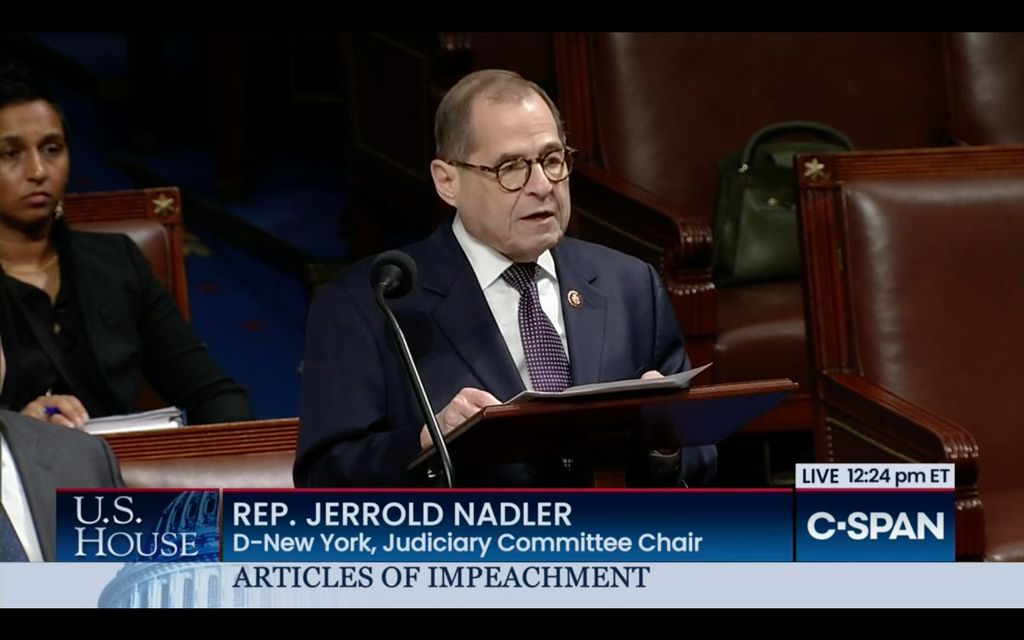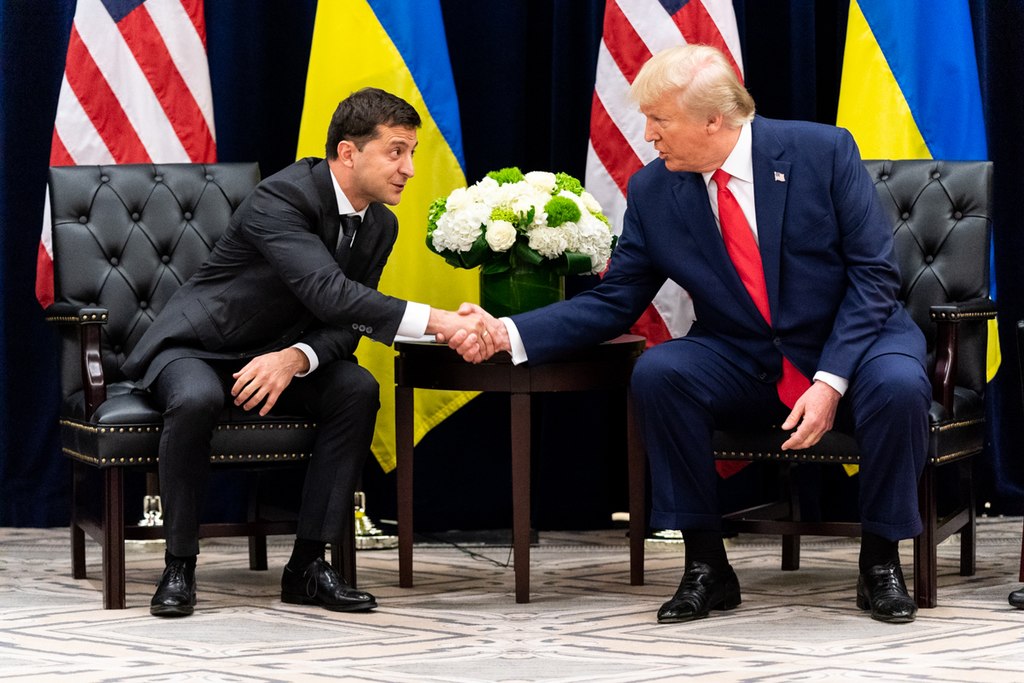Washington, DC, USA —(Map)
Yesterday, after a long day of speeches from different points of view by Democrats and Republicans, the United States House of Representatives voted to impeach US President Donald Trump.
Branches of Government
The US constitution (the rules of the country) guides the way its government works. It divides the government into three parts, each with the power to keep the other parts under control.
One of the jobs of Congress is to make sure the president follows the law. Through impeachment, Congress can investigate (look into) whether the president broke any laws, and, if necessary, remove the president.

(Source: Screenshot, C-Span.)
The Speaker of the House, Nancy Pelosi opened the discussion, saying that the president’s actions required impeachment. “He gave us no choice,” she said. From that point on, House members stood, giving short, often emotional speeches either in favor of or against impeaching the president.
The “articles of impeachment” – the charges against Mr. Trump – were decided last Friday. The two charges were “abuse of power” (misusing his power as president) and “obstruction of Congress” (trying to stop Congress from doing its job of investigating him).

(Source: Screenshot, C-Span.)
After about eight hours, the House finally voted. The votes were split by party. Most Democrats voted to impeach, and all Republicans voted against impeachment. Since the House is controlled by Democrats, the votes passed easily. Mr. Trump is the third president ever to be impeached.
The process now moves to the Republican-controlled Senate, where a trial will be held.
Results of House Votes on Impeachment
| Article | Yes | No |
|---|---|---|
| Abuse of power | 230 | 197 |
| Obstruction of Congress | 229 | 198 |
The House began investigating Mr. Trump in early September after Congress learned about a phone call between Mr. Trump and Ukraine President Volodymyr Zelensky.
The phone call seemed to connect two important facts: 1. Mr. Trump was holding back $391 million from the Ukraine, and 2. Mr. Trump wanted Mr. Zelensky to investigate Joe Biden, a Democratic politician who hopes to replace Mr. Trump as president.

(Source: The White House [Public domain], via Wikimedia Commons.)
Both facts are unusual by themselves. No one seemed to know why the money was being held back, and it’s highly unusual for an American president to ask a foreign country to help find damaging information about another American politician.
But the key question is whether the two facts are connected – did Mr. Trump use the payment to pressure Mr. Zelensky to investigate Mr. Biden? That would be against the law. The results of the House’s investigation suggest that he did.
Mr. Trump says he didn’t break any laws. He describes his call with Mr. Zelensky as “perfect”.

(Source: Screenshot, C-Span.)
But Mr. Trump made it very hard for the House to investigate what happened. Mr. Trump told people who worked at the White House not to talk to the House. He told other parts of the government not to give information to the House.
Because the White House wouldn’t cooperate, most people who spoke during the House investigation were people who were part of the government long before Mr. Trump was elected.

(Source: Joyce N. Boghosian/White House [Public domain], via Wikimedia Commons.)
The Senate, which is controlled by Republicans, will be in charge of Mr. Trump’s trial. The trial is expected to take place next month and to last about two weeks. The Republicans are working closely with the White House to decide how the trial will be handled.
At the end of the trial, the Senators will decide if Mr. Trump is guilty of the charges. Several Republican senators say they have already made their minds up before the trial has even begun. As Senate leader Mitch McConnell put it, “There’s no chance the president will be removed from office.”
😕
This map has not been loaded because of your cookie choices. To view the content, you can accept 'Non-necessary' cookies.
